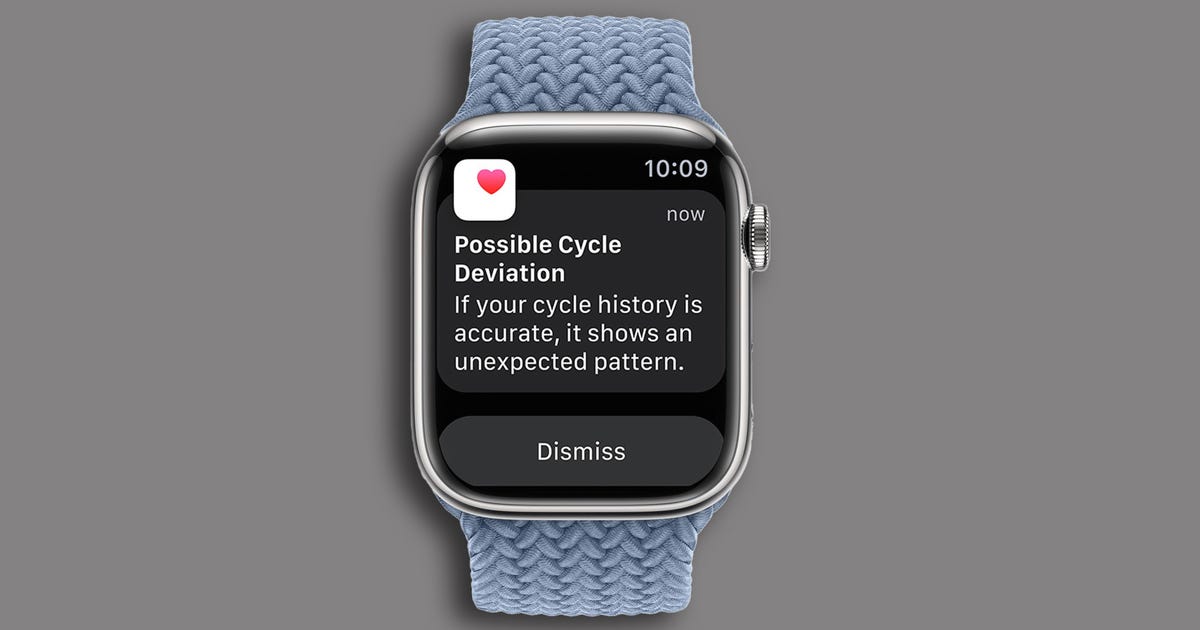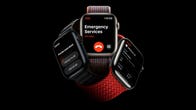
This story is part of Focal Point iPhone 2022, CNET’s collection of news, tips and advice around Apple’s most popular product.
Apple took one step further into health when it unveiled the Apple Watch Series 8 last month. The new watch includes temperature sensors that can pick up a subtle temperature shift (also called the biphasic shift) that happens mid-menstrual cycle, offering users insight into when they’re ovulating, or if they’re ovulating at all.
So what’s the big deal?
While the menstrual cycle has historically been underresearched in terms of overall health, it’s a key vital sign that often reflects someone’s general physical and emotional health (stress, for example, is a notable culprit behind late periods). So a lack of ovulation, periods that are frequently irregular or any big change in a menstrual cycle could be a hint that something’s off, or could even warrant a trip to see your doctor for some root-cause investigation. That’s the main push behind Apple’s new cycle deviation notifications, according to Dr. Sumbul Desai, Apple’s vice president of health.
“The idea there is really to provide you with an actionable insight and a notification, so you can go have a conversation with a physician,” Desai said.
With Cycle Deviations, iOS 16 and WatchOS 9, users will be notified if something’s off if they regularly track their cycles with Apple, regardless of whether they tune into the new ovulation estimate feature. Earlier this year, Apple released findings on its study using menstrual cycle data linking irregular cycles to polycystic ovary syndrome and other health conditions.
But more on the importance of temperature tracking: Your body temperature changes based on where you are in your menstrual cycle (when you’re not taking any birth control that stops you from ovulating, that is). Right before ovulation, your temperature usually dips to its lowest point. After ovulation, your temperature rises slightly. Two sensors are included in the Watch Series 8, one close to your skin and the other under the watch display, which will track your temperature every five seconds overnight.
You’ll need to wear the watch to bed for a couple menstrual cycles for the estimates to be accurate, and you’ll be able to see shifts from your baseline temperature in the Health app.
The temperature sensors aren’t completely limited to people who get periods. The Series 8 could detect lifestyle changes or illnesses outside of reproductive health patterns, like small temperature changes from jet lag, the beginning of an illness or overtraining, says Desai. As with a menstrual cycle change or another health pattern shift gleaned from fitness trackers, you can choose to take that information with you for future follow-up.
But consistent temperature measurements are especially important if you choose to track ovulation, as alcohol intake, illness and other lifestyle factors can all throw off your body temperature from its baseline and interfere with fertility estimates. When used in combination with other fertility tracking methods, like checking the consistency of your cervical mucus, tracking your temperature can help plan or prevent a pregnancy.
Apple is careful not to claim the new watch is a birth control device, calling the ovulation estimates given each month “retrospective” and more geared toward people planning a family. (You’re probably most fertile right before ovulation occurs, before an egg is actually released from your ovary.) But it does offer an alternative way to keep tabs on when you’re most likely to be fertile, as opposed to the basal thermometers some people use for birth control or when trying to get pregnant.
“The hope is you would use this instead of the thermometer,” Desai said. While taking your temperature consistently every single morning can be an effective way to monitor fertility patterns, there’s a lot of room for user error, like forgetting to note your measurements or taking it at the wrong time. Wearing the watch overnight will give you the same information but in a more “passive” way, Desai adds. (Again, the new Apple Watch wasn’t studied as birth control device. Even in people with regular, more predictable menstrual cycles, the timing of ovulation often varies slightly cycle to cycle. Think day 13 one cycle, day 15 the next.)
While just how far Apple will continue to dive into the world of reproductive health is unknown, the company’s commitment to the menstrual cycle as another key part of wellness seems here to stay.
“As a physician, our goal is to take different data points that are relevant to you holistically, and understand what may be going on,” Desai said.
Apple says the health data is encrypted end to end. This type of privacy is a concern among many who use period tracking apps and want a say in who has access to their personal health data.
Read more: Best Smartwatch for 2022
The information contained in this article is for educational and informational purposes only and is not intended as health or medical advice. Always consult a physician or other qualified health provider regarding any questions you may have about a medical condition or health objectives.

